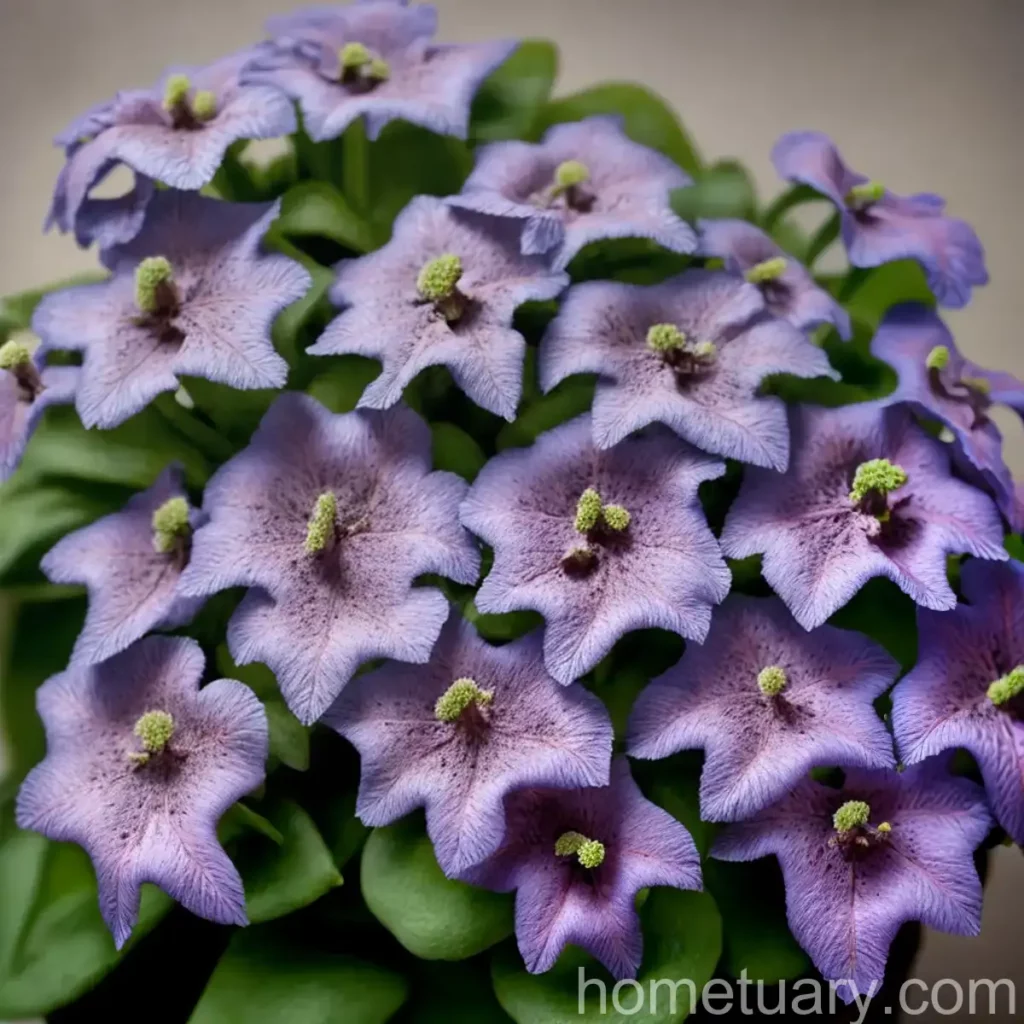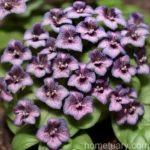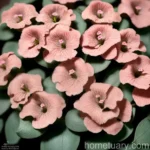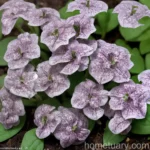Lungwort (Pulmonaria ‘May Bouquet’): A Comprehensive Guide
In the world of gardening and horticulture, the Pulmonaria ‘May Bouquet’, commonly known as lungwort, is a popular perennial valued for its vibrant, early-spring blooms and attractive foliage. This exquisite plant also offers a range of benefits, making it a sought-after addition to gardens. In this comprehensive guide, we will delve into every aspect of the lungwort plant, from its characteristics to its care requirements and maintenance tips. So, let’s embark on an illuminating journey into the captivating world of Pulmonaria ‘May Bouquet’.
What is Lungwort (Pulmonaria ‘May Bouquet’)?
Lungwort, scientifically categorized as Pulmonaria ‘May Bouquet’, is a herbaceous perennial plant that belongs to the Boraginaceae family. This botanical gem is renowned for its striking, tubular flowers and distinctive speckled foliage. The plant’s common name, lungwort, is attributed to its historic use as a remedy for lung diseases due to its spotted leaves, which were believed to resemble diseased lungs, following the Doctrine of Signatures.
Key Takeaways – Lungwort (Pulmonaria ‘May Bouquet’)
Before delving into the various aspects of cultivating and caring for the lungwort plant, it is essential to understand the key takeaways associated with this remarkable botanical specimen. The following points offer a succinct overview of what lungwort has to offer:
- Pulmonaria ‘May Bouquet’ Characteristics: This plant is characterized by its delicate, funnel-shaped flowers and distinctly speckled foliage, adding ornamental value to gardens.
- Gardening Tips: Proper care and attention are crucial for the optimal growth of lungwort, and this guide will provide essential tips and insights to assist gardeners in nurturing this plant effectively.
- Planting Guide: Understanding the appropriate planting techniques and conditions is pivotal for establishing a thriving lungwort garden, and this guide will provide comprehensive insights into the planting process.
- Disease Resistance: Lungwort exhibits resistance to certain diseases, enhancing its overall resilience in garden settings.
- Wildlife Habitat: The plant serves as a habitat and a food source for various wildlife, attracting pollinators and adding ecological value to the garden.
Now that we’ve established a foundational understanding of lungwort, it’s time to dive into the specifics of cultivating and caring for this captivating plant.
Culture
Understanding the cultural requirements of lungwort is fundamental for fostering its growth and ensuring its overall well-being. From soil considerations to sunlight exposure, several factors influence the plant’s cultural needs.
Growth Habit
Lungwort is characterized by its clumping growth habit, with low-mounding foliage that forms dense mats. The plant typically reaches a height of 8 to 12 inches, and its spread can range from 12 to 24 inches. This compact growth habit makes lungwort an excellent choice for borders, woodland gardens, and shaded areas.
Uses
The versatile nature of lungwort makes it suitable for various landscaping and horticultural purposes. Some common uses of lungwort include:
- Ornamental Value: Lungwort’s delightful flowers and speckled foliage make it a prized ornamental plant, adding visual interest to gardens, especially in early spring.
- Shade Gardens: Due to its tolerance for shade, lungwort is an ideal choice for shaded or woodland gardens, where its bright blooms and variegated leaves can thrive.
- Wildlife Gardens: The nectar-rich flowers of lungwort attract pollinators, such as bees and butterflies, making it a valuable addition to wildlife-friendly gardens.
- Groundcover: The low-mounding growth of lungwort lends itself to being used as a groundcover in garden beds and borders, providing lush greenery and colorful blooms.
Water
Adequate and consistent moisture is vital for the well-being of lungwort, especially during its active growth periods. However, it’s crucial to ensure proper drainage to prevent waterlogged conditions that can be detrimental to the plant.
Water Requirements:
- Lungwort prefers consistently moist, well-drained soil.
- Avoid overwatering, as excessively wet conditions can lead to root rot and other issues.
Sunlight
Lungwort is primarily known for its adaptability to shade and partial shade conditions. While it can tolerate some sunlight, especially in cooler climates, it generally thrives in shadier environments.
Sunlight Exposure:
- Plant lungwort in dappled shade or partial shade for optimal growth and flowering.
- In hotter climates, provide the plant with morning sun and afternoon shade to prevent leaf scorch.
Soil
The right soil conditions can significantly influence the health and vigor of lungwort. Understanding the soil preferences of this plant is crucial for creating a suitable growing environment.
Soil Requirements:
- Lungwort thrives in moist, humus-rich, and well-draining soil.
- Aim for a slightly acidic to neutral pH level, ideally in the range of 6.0 to 7.5.
Fertilizer
Proper nutrition is essential for promoting healthy foliage, robust flowering, and overall vitality in lungwort. While the plant is not heavy feeder, occasional fertilization can support its growth.
Fertilization Tips:
- Apply a balanced, slow-release fertilizer in early spring to provide essential nutrients for the growing season.
- Avoid overfertilization, as lungwort’s nutrient requirements are relatively modest.
Pruning
Pruning plays a crucial role in maintaining the appearance and vigor of lungwort, helping to manage its growth and rejuvenate the plant as needed.
Pruning Techniques:
- Deadheading: Removing spent flowers can encourage the production of new blooms and prevent self-seeding.
- Spring Maintenance: Trim back any damaged or unsightly foliage in early spring to promote fresh growth.
- Division: Periodically dividing mature lungwort plants can help maintain their vigor and prevent overcrowding.
Propagation
The propagation of lungwort offers an opportunity to expand its presence in the garden or share its beauty with other gardening enthusiasts.
Propagation Methods:
- Division: Divide established clumps of lungwort in early spring to create new plantings and rejuvenate older specimens.
- Seed Propagation: While lungwort can be grown from seeds, it’s important to note that hybrid varieties may not come true from seed, so division is often the preferred propagation method.
Container Gardening
In addition to being a delightful addition to garden beds, lungwort can thrive in containers, offering a versatile option for gardening enthusiasts with limited space.
Container Popularity:
- Lungwort’s compact growth habit and attractive foliage make it well-suited for container cultivation.
- Utilize containers with adequate drainage and a quality potting mix to ensure optimal growth and health.
Container Planting Ideas:
- Combine lungwort with other shade-loving plants, such as hostas and ferns, to create a visually appealing container garden for shaded patios and outdoor spaces.
Common Diseases
While lungwort is generally resilient, it can be susceptible to certain diseases that may impact its health and appearance.
Disease Diagnosis:
- Powdery Mildew: A common issue in humid conditions, characterized by a powdery white coating on the leaves. Improve air circulation and consider using fungicidal treatments if necessary.
- Leaf Spot: This fungal disease causes dark spots on the foliage. Remove and destroy affected leaves and maintain good sanitation practices to prevent its spread.
Common Pests
Although lungwort is relatively resistant to pests, it can occasionally face challenges from certain insect intruders.
Pest Management:
- Slugs and Snails: These mollusks can feed on lungwort foliage, causing damage. Use organic slug baits or diatomaceous earth to deter these pests.
- Spider Mites: These tiny pests may appear as fine webbing on the undersides of leaves. Regularly inspect the plant and use insecticidal soap if spider mites become problematic.
Botanist’s Tips
For those seeking to cultivate and appreciate lungwort in their own gardens, following these expert tips can contribute to the successful growth and flourishing of this captivating perennial.
Fun Facts:
- The genus name “Pulmonaria” is derived from the Latin word “pulmo,” meaning lung. This association reflects the historical belief in the Doctrine of Signatures, where plants resembling body parts were seen as having medicinal properties for those organs.
- Lungwort flowers are noted for their fascinating color-changing ability, with blossoms transitioning from pink to blue as they mature.
Fun facts
Now that we’ve delved into the essential aspects of lungwort cultivation and care, let’s explore a selection of valuable external resources that provide additional insights into this exceptional plant:
- The Royal Horticultural Society – Gardening Advice for Pulmonaria
- Missouri Botanical Garden – Pulmonaria Plant Profile
- University of Florida IFAS Extension – Lungwort for North Central Florida Gardens
- North Carolina State University Extension – Growing Pulmonaria in the Landscape
- Chicago Botanic Garden – Pulmonaria Seasonal Plant Profile
By exploring these resources, readers can gain a comprehensive understanding of lungwort and its diverse attributes, cultivation requirements, and potential applications in the garden. Whether you’re a seasoned gardener or a newcomer to the world of horticulture, the captivating allure of lungwort is sure to inspire and enrich your gardening endeavors.
In conclusion, the Pulmonaria ‘May Bouquet’, commonly known as lungwort, stands as a remarkable perennial plant that captivates with its early-spring blooms, decorative foliage, and ecological significance. Its adaptability to shade, low-maintenance nature, and ornamental value make it a cherished addition to diverse garden settings. By understanding its cultural requirements, care guidelines, and propagation methods, gardeners can cultivate and appreciate this botanical gem while contributing to the rich tapestry of flora in their outdoor spaces. As you embark on your journey with lungwort, may the beauty and resilience of this plant bring joy and inspiration to your gardening endeavors.
Remember, the joy of growing lungwort lies not only in nurturing its physical form but also in celebrating the stories, folklore, and natural wonders that encapsulate this enchanting botanical treasure. Happy gardening and may your lungwort blooms evoke wonder and delight in your garden!
References:
– RHS – Royal Horticultural Society. (n.d.). Pulmonaria. https://www.rhs.org.uk/advice/profile?pid=254
– Missouri Botanical Garden. (n.d.). Pulmonaria. http://www.missouribotanicalgarden.org/PlantFinder/PlantFinderDetails.aspx?kempercode=c620
– University of Florida IFAS Extension. (n.d.). Lungwort for North Central Florida Gardens. https://edis.ifas.ufl.edu/ep561
– North Carolina State University Extension. (n.d.). Growing Pulmonaria in the Landscape. https://content.ces.ncsu.edu/growing-pulmonaria-in-the-landscape
– Chicago Botanic Garden. (n.d.). Pulmonaria. https://www.chicagobotanic.org/plantinfo/pul20















